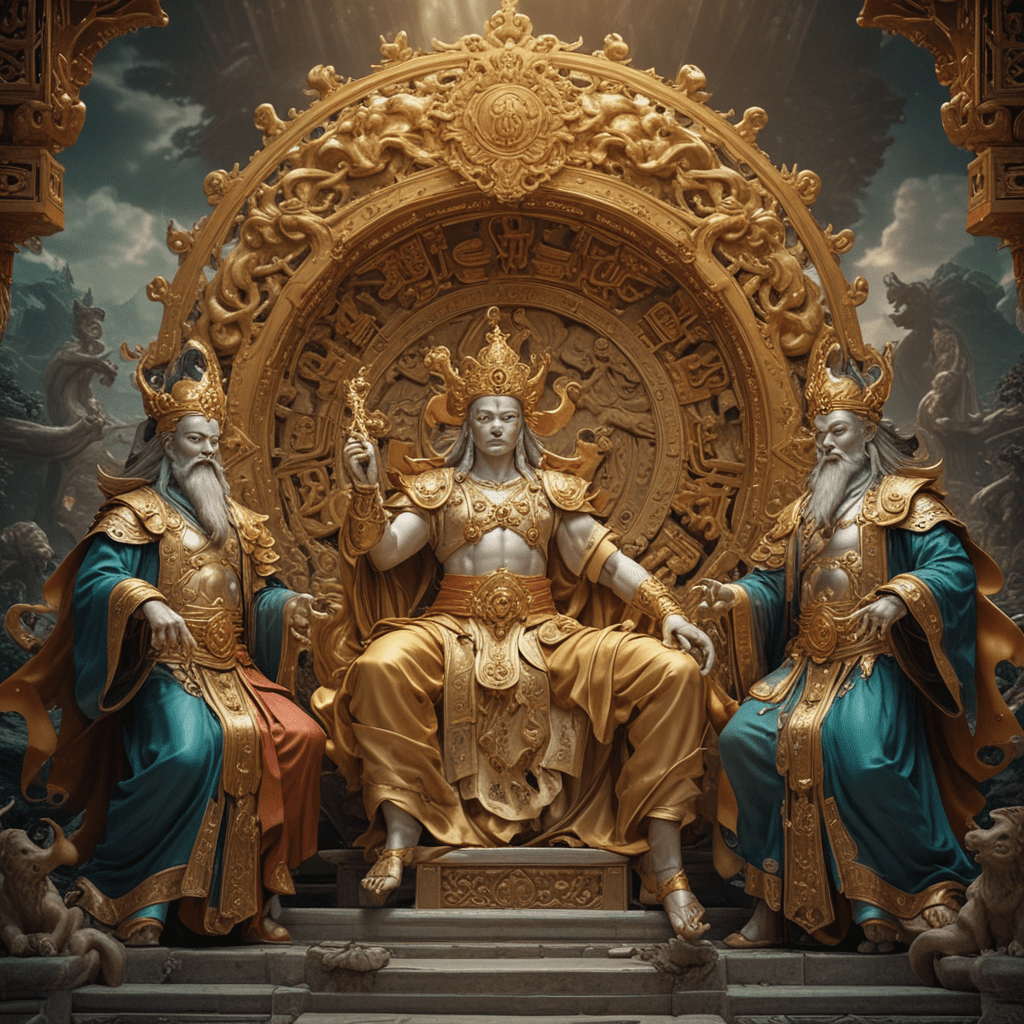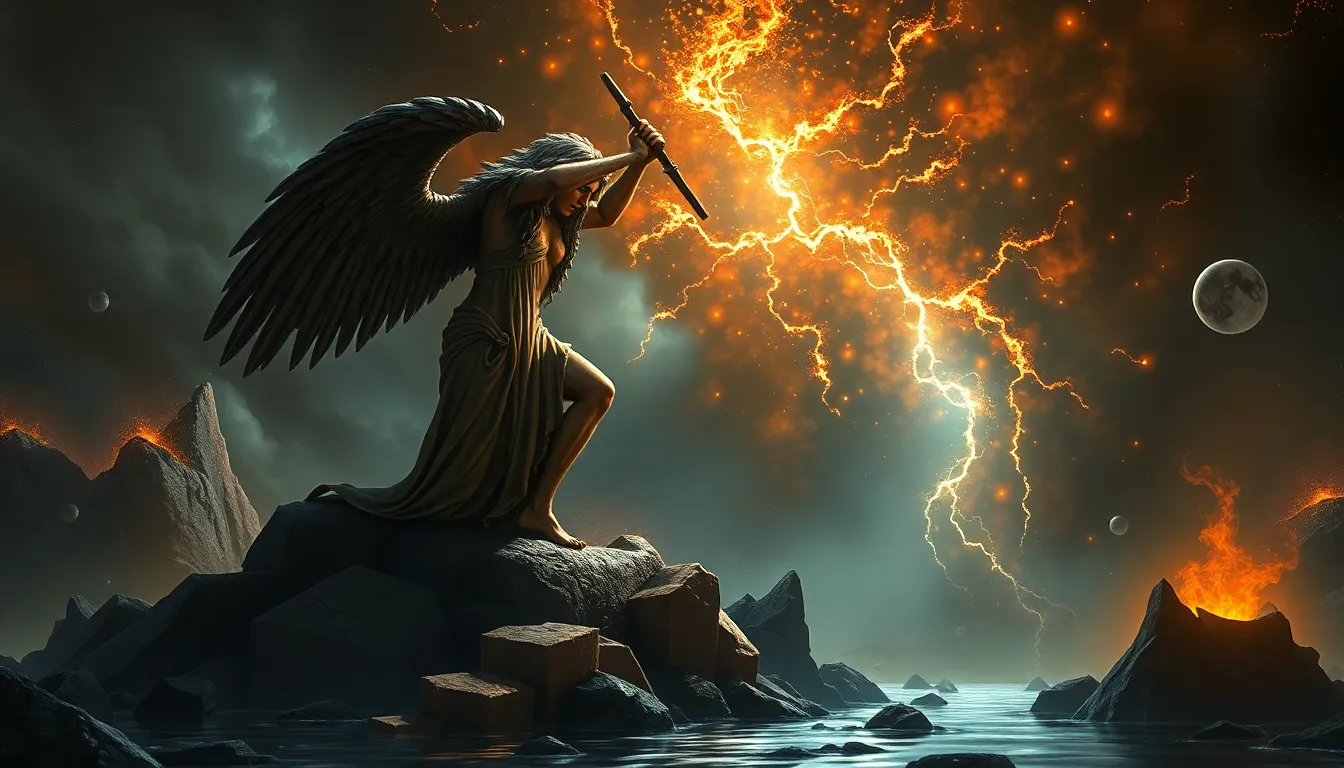The Myth of the Three Sovereigns and Five Emperors in Chinese Mythology
The Myth of the Three Sovereigns and Five Emperors is a fundamental narrative in Chinese mythology, describing the origins of Chinese civilization and the establishment of a harmonious and prosperous society. This myth has played a pivotal role in shaping Chinese culture and identity throughout history.
The Three Sovereigns
The Three Sovereigns are the most ancient figures in Chinese mythology, credited with laying the foundation for human civilization.
Suiren
Suiren, meaning "Fire Maker," is the legendary inventor of fire, which allowed humans to cook food, escape the cold, and create tools. He is also associated with inventing the drilling method for making fire.
Fuxi
Fuxi is known as the "Father of Chinese Civilization." He is credited with creating the eight trigrams, the foundation of Chinese divination and philosophy. He also taught humans to fish and domesticate animals, establishing the basis of agriculture and animal husbandry.
Shennong
Shennong is considered the "Divine Farmer." He discovered the medicinal properties of herbs and classified them for their healing powers. He also taught humans about agriculture, including how to cultivate crops and raise livestock, significantly improving their livelihood.
VI. The Parallels and Contrasts to Other Mythologies
The Myth of the Three Sovereigns and Five Emperors shares similarities with other creation myths and legends worldwide.
A. Egyptian Creation Myths
In Egyptian mythology, the god Ra emerged from the primordial waters and created the world. This parallels the Chinese myth's emphasis on a creator figure originating from chaos.
B. Greek and Roman Legends
The Greek and Roman myths also feature a succession of gods and rulers who contributed to the establishment of civilization. Zeus, the king of the gods, resembles Huangdi in his role as a powerful and benevolent ruler.
C. The Epic of Gilgamesh
The Epic of Gilgamesh, a Mesopotamian myth, tells the story of a semi-divine hero who seeks immortality. This reflects the Chinese myth's focus on cultural heroes who improved human existence.
VII. The Interpretation and Evolution of the Myth
A. Confucianism and Daoism
Confucianism emphasized the role of the Three Sovereigns and Five Emperors as moral exemplars and the founders of social order. Daoism, on the other hand, saw them as symbols of harmony with nature and the Dao.
B. Buddhism and Folk Religion
Buddhism incorporated the Three Sovereigns and Five Emperors into its pantheon as protectors and embodiments of wisdom. Folk religion venerated them as deities responsible for human well-being and prosperity.
C. Modern Chinese Interpretations
In modern China, the myth has been reinterpreted to promote national identity and cultural pride. It has inspired literature, art, and political discourse.
VIII. The Artistic Depictions of the Three Sovereigns and Five Emperors
A. Paintings and Calligraphy
The Three Sovereigns and Five Emperors have been depicted in numerous paintings and calligraphic works throughout Chinese history. These depict them as wise and majestic figures, surrounded by symbols of their contributions.
B. Sculptures and Temples
Statues and sculptures of the Three Sovereigns and Five Emperors are found in temples and historical sites across China. These portray them as honored deities, symbolizing prosperity and cultural achievement.
C. Drama and Literature
The Three Sovereigns and Five Emperors have also been featured in Chinese drama and literature. Plays and novels recount their stories, emphasizing their roles in shaping Chinese history and culture.
IX. The Impact of the Myth on Chinese Culture
A. Customs and Traditions
The myth has influenced Chinese customs and traditions, such as the veneration of ancestors and the emphasis on education and morality.
B. Beliefs and Festivals
The Three Sovereigns and Five Emperors are celebrated in festivals and rituals, where they are invoked for blessings and protection.
C. Cultural Identity
The myth has played a vital role in shaping Chinese cultural identity, providing a common origin story and a sense of pride in their heritage.
X. Conclusion
The Myth of the Three Sovereigns and Five Emperors remains a central narrative in Chinese mythology and culture. It reflects the deep-rooted belief in the origins of civilization and the human spirit of progress and achievement. Its impact on Chinese customs, traditions, and identity continues to endure, making it a timeless and enduring part of Chinese heritage.
FAQ
Q: Who is the most important figure in the myth?
A: Huangdi, the Yellow Emperor, is generally considered the most significant figure among the Five Emperors.
Q: What is the significance of the number three and five in the myth?
A: The number three symbolizes the Three Sovereigns, who are divine beings representing fire, hunting, and agriculture. The number five represents the Five Emperors, who are semi-divine rulers who established civilization and social order.
Q: How does the myth reflect Chinese values?
A: The myth emphasizes the importance of civilization, culture, agriculture, and government. It also highlights the role of wise and benevolent rulers in shaping a harmonious and prosperous society.



